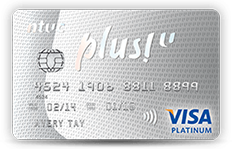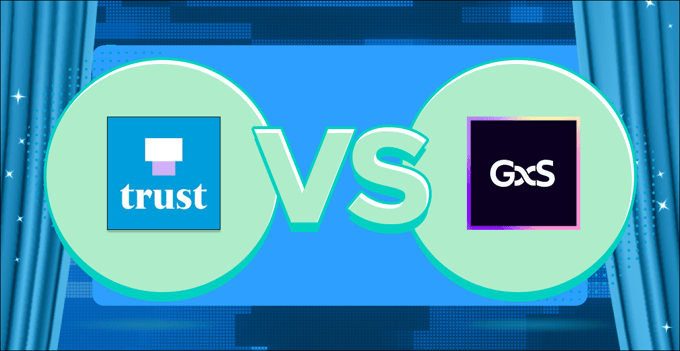Banking on the future? Despite the recent interest rate hikes, traditional banks seem to be outshined by digital banks like GXS Bank and Trust Bank in Singapore. What do they bring to the table and are they worth converting over to?
Goodbye to the old, and hello to the new.
If you’ve been keeping a finger on the FinTech industry’s pulse, you would’ve probably been excited (or skeptical) about the new digital bank launches in Singapore.
The simultaneous entry of both GXS Bank and Trust Bank has been interesting. Not only are they directly competing with each other but also with other traditional banks. They’ve taken compounding interest to the next level by accruing interest on bank balance daily with no minimum balance required.
All of these attractive features and neck-to-neck competition sure make them the talk of the town. Not to mention, they pose a concerning threat to traditional banks.
But although these offerings seem great (almost too good to be true), are they really worth jumping ship from traditional over to digital banking? Are the recent interest rate hikes by traditional banks enough to keep consumers loyal?
Table of contents
- Traditional banks vs. digital banks
- Best digital banks savings accounts in Singapore
- Which is better: Trust Bank or GXS Bank
- Trustworthiness of digital banks
- Conclusion: Where to save
Disclaimer: This article is for educational purposes only and does not serve as professional advice. Readers are highly advised to do their own research and deduce the effectiveness of financial products based on their financial situation and goals.
What’s the difference between traditional banks and digital banks in Singapore 2023?
Below is an overview of the key differences between traditional and digital banks in 2023:
| Traditional bank | Digital bank |
| Physical branches | No physical branches; completely online |
| Daily interest | Monthly interest |
| Minimum monthly balance required | No minimum monthly balance |
| Either 24/7 customer service or limited to working hours | 24/7 helpline and support services |
| More ATMs and coin deposit machines available | Limited number of ATMs and coin deposit machines |
| Higher fees (e.g. transaction, management) | Little to no fees (e.g. transaction, management) |
| Relatively more rigid processes (especially those non-online or by paperwork) | Relatively more flexible due to technology |
| Less vulnerable to technological issues (e.g. cyberattacks, data leaks, etc.) | More vulnerable to technological issues (e.g. cyberattacks, data leaks, etc.) |
Out of these, we've highlighted four key differences.
1. Physical vs. Online
Well, the main difference really is traditional banking provides both physical and digital services whereas digital banks operate completely online.
That’s right, digital banks don’t offer any physical branches. All transactions and services will be performed online through your smart device or phone.
Given the changes in digital transformation and consumer behaviour, the way we interact with banks and manage personal finance has evolved over the years. Other than security (obviously), people have grown to value convenience and efficiency above all else.
With that in mind, digital banks seemingly have an edge over traditional banks despite an overlap in services offered. Actions like opening an account, investing, and applying for financial products like credit cards and loans can all be processed through the click of a button.
After all, who can resist settling all these meddlesome tasks from the comfort of your own bed?
Digital banking removes obstacles found in traditional banking and thereby, minimises consumer friction.
2. Minimum deposit amount and bank balance
Traditional banks normally demand a minimum deposit amount, or if not, require a minimum monthly balance to be maintained. Failure will result in a fall-below fee being imposed.
On the other hand, digital banks demand no such things. This simplifies the savings process, making it more fuss-free for those with lower income, volatile earnings, or who survive on regular withdrawals.
3. Amount of interest accrued
The next overt difference between the two is the interest incurred.
One of the key selling points of digital banks is their daily interest (p.a.) offered. While this concept sounds revolutionary since it’s unheard of in traditional banking, is it as good as it claims to be?
Let’s take OCBC 360, UOB One, and Trust Bank over a period of 30 days as a case study.
|
For a bank balance of first S$50,000
(Over 30 days) |
|||
|
OCBC 360 (Traditional)
|
UOB One (Traditional)
|
Trust Bank (Digital)
|
|
|
Maximum interest rate
|
7.65% p.a.
(0.6375% accrued monthly)
|
7.80% p.a.
(0.65% accrued monthly)
|
2.5% p.a.
(0.00685% accrued daily)
|
|
Estimated interest earned
|
S$50,000 x 0.6375% = S$318.75
|
S$50,000 x 0.3% = S$325
|
~S$102.75
|
|
Total monthly balance (after 30 days)
|
S$50,318.75
|
S$50,325
|
S$50,102.75
|
As illustrated, although the daily interest rate sounds enticing, the actual interest earned may fall short of the monthly interest earned.
However, these total monthly balances are calculated under the scenario of maximum possible interest rates. They are usually not the realistic rates for most Singaporeans.
|
For a bank balance of first S$50,000
|
|||
|
OCBC 360 (Traditional)
|
UOB One (Traditional)
|
Trust Bank (Digital)
|
|
|
Realistic interest rate
|
2.65% p.a.
(0.221% accrued monthly)
|
3.85% p.a.
(0.321% accrued monthly)
|
2.5% p.a.
(0.00685% accrued daily)
|
|
Interest earned
|
S$50,000 x 0.221% = S$110.50
|
S$50,000 x 0.0321% = S$160.50
|
~S$102.75
|
|
Total monthly balance (after 30 days)
|
S$50,110.50
|
S$50,160.50
|
S$50,102.75
|
Based on these figures, it seems that the difference between monthly interest and daily interest isn’t that big. After all, the total interest earned daily is less than that of monthly.
However, it's also worth noting that the interest rates offered by the above banks are different, so it's not a direct apples-to-apples comparison. But even if we use the same monthly interest rate of 2.5%, the difference is still minor (S$50,102.75 vs S$50,104.20).
So what does this mean?
Well, in these calculations, the interest rates were only applied to the base S$50,000 sum. For simplicity's sake, things like (daily) withdrawals and/or deposits were not accounted for.
Moreover, we have to examine who the target audience is. Digital banks largely market their daily interest toward unbanked users. These rates are beneficial for those with volatile earnings such as part-time workers, gig economy workers, entrepreneurs, and other self-employed individuals.
These people depend on daily (or regular) deposits and withdrawals for their cashflow. Depositing a steady, fixed sum every month is a luxury for them. Hence, monthly interest rates become meaningless for a dwindling bank balance at the end of each month.
Read more:
4 Singaporean Female Entrepreneurs Share Their Personal Finance Tips
Actor Gavin Teo Says That He Earned a “Pretty Decent Amount” as a Street Singer, so Why did He Quit?
4. Cost of fees
Compared to traditional banks, digital banks offer little to no fees.
For example, Trust Bank has neither an early account closure fee, fall-below fee nor monthly fee. Conversely, a traditional bank like DBS has fees like S$5 fall-below fee (per month) and S$30 early account closure fee*.
If you’re not careful, these pesky fees can creep up on you and further penalise your (already low) bank balance.
*For more details, please refer to their T&Cs.
Read more:
Debt Consolidation Plan: What is it and How Does it Work?
Will a Debt Consolidation Affect My Credit Score?
How Debt Consolidation Can Improve Your Credit Score Over Time
Not Ju$t You: Swimming in Debt
Best digital banks savings accounts in Singapore 2023
Trust Bank
Backed by Standard Chartered and FairPrice Group, the digitally-native Trust Bank aspires to pave the way for future banking in Singapore. Thanks to this partnership, frequent grocery shoppers at FairPrice supermarkets will benefit the most from their offerings.
Featuring a savings account, a debit/credit card, and a family personal accident insurance, their top two biggest incentives have been the daily interest rate accrued in savings and the elimination of pesky fees otherwise found in traditional banking.
| Trust Bank Savings Account | |
| Base interest rate (p.a., accrued daily) | For balances up to S$125,000: 1.5% p.a. For balances more than S$125,000: 0.05% p.a. |
| Bonus interest rate (make 5 eligible card purchases) | For balances up to S$125,000 (non-NTUC Union member): + 0.5% p.a. For balances up to S$125,000 (NTUC Union member): + 1% p.a. |
| Total maximum interest rate | Non-NTUC Union member: 2% p.a. NTUC Union member: 2.5% p.a. |
The interest earned by your Trust Bank savings account is accrued daily and credited at the end of every month. No minimum balance is required, meaning your initiating sum can be any amount possible.
Despite the recent interest rate hikes, traditional banks in Singapore credit interest to account users either on a monthly or quarterly basis.
Not to mention, users would have to satisfy multiple conditions before achieving these higher, desirable rates. All of these obstacles have largely disadvantaged those without a steady flow of income or depend on daily withdrawals for cashflow.
But with daily interest rates, this could help these communities save more for their pockets and build better saving habits in the long run. This has been viewed as a game-changer for such individuals.
|
Credit card
|
Savings account
|
|
No annual fee
|
No lock-in period
|
|
No foreign transaction fee (including 1% Visa charges)
|
No monthly fee
|
|
No cash advance fee
|
No minimum balance required
|
|
No card replacement fee
|
No account closure fee
|
|
No foreign transaction fee
|
|
|
No card replacement fee
|
Credit card wise, there are two different cards available: Trust Link card (for everyone) and NTUC Link card (only for NTUC Union members).
| For non-NTUC Union members |
For NTUC Union members |
| Conversion rate 100 Linkpoints = S$1 💵 |
|
Both of them are Visa credit cards and can double up as debit cards with a Trust Bank savings account opened. And as shown above, they don’t have any annual fees, foreign transaction fees, cash advance fees or foreign transaction fees.
These cards are heavily integrated into NTUC’s ecosystem, utilising the NTUC Linkpoint system to help customers earn up to 21% rebates on their grocery shopping.
Every 100 Linkpoints earned is equivalent to S$1 cashback.
Below is a table breakdown of the maximum possible Linkpoints earned:
| Credit card | Debit card | Credit + Debit card | |
| Trust Link Credit Card |
|
|
Caltex Debit + credit card: Up to 20% discount (17% upfront discount + 0.22% Linkpoints rebate) on the nett transaction amount if you meet the minimum monthly spend
Min. S$350 monthly spend (Max. 20.09% rebates earned)
|
| NTUC Link Credit Card |
|
|
|
| Note: Minimum monthly spend needs to be met on purchases outside of FPG to qualify. |
|||
| Rebate rates are purely promotional rates, available until 31 Oct 2023. Rates will be reduced to 8% (Trust Link) and 14% (NTUC Link) from 1 Jan 2023 onwards. | |||
Still confused about how to maximise your NTUC savings? Here’s a useful infographic to illustrate:
💵 Sign-up promotion: Receive a S$25 FairPrice e-voucher when you download their app and sign up for a Trust/NTUC Link credit card. Use additional <8ECQMGJK>, <2GQEAM81> promo code for a bonus S$10 voucher, effectively bringing up your FairPrice savings to S$35 in total.

Discontinued by 1 Feb 2023
Essentially, the Trust Bank savings account and cards will be replacing the NTUC-OCBC Plus! Partnership. Come 1 February 2023, the OCBC NTUC Plus! Visa credit and debit cards, NTUC-OCBC Starter account and Plus! savings account will cease all functions.
It's time to either hop on the Trust/NTUC Link credit card bandwagon or opt for these grocery credit card alternatives instead.
GXS Bank
The other digital bank entering the fray is the Grab-Singtel consortium GXS Bank. Although it doesn’t have a debit or credit card like Trust Bank, the GXS Savings Account and its features seem to be on par with its competitors. (Yes, we’re talking about daily interest rates again!)
Similarly, no minimum sum is required to get started, with no minimum balance, lock-in period, or fall-below fee to adhere to. Interest is credited to accounts with every cent earned.
The GXS Savings Account consists of a Main Account and eight Savings Pockets.
Savings in Main Account will earn you an interest of 0.08% p.a., while each of the eight Savings Pockets offers 3.48% p.a. interest.
| GXS Bank Savings Account (capped at S$75,000) | |
| Main account interest rate (p.a., accrued daily) | 2.38% p.a. |
| Savings pockets (p.a., accrued daily) | 2.68% p.a. |
Users can open up to eight Savings Pockets, with each pocket dedicated to a particular saving goal. For instance, one Pocket could be allocated to your mortgage, another Pocket could be allocated to pay off past education loans, and one more Pocket could be used to save up for a dream holiday vacation. This concept combines budgeting and saving into one hybrid.
You can deposit up to S$75,000, and the interest is accrued on a daily basis so that you can withdraw your savings at any time without worrying about losing out on the interest. For example, if you have S$75,000 in savings, you would earn S$7.15 every day or S$2,655 in a year.
Funds can also be transferred from your main savings account to any Pocket when wanted.
However, do note that you can't deposit or withdraw cash from your GXS Savings Account. You also don't have a debit card, although GXS said they would launch it soon.
Read more:
Best Education Loans in Singapore (2023)
Best Home Loans in Singapore (2023)
In terms of the main savings account, the 2.38% p.a. base interest offered by GXS Bank is already higher than the 0.05% base interest offered by traditional banks. However, the real winner here is GXS’s Savings Pockets.
As mentioned, savings in each Savings Pocket will earn you 2.68% p.a. interest, which accrues daily.
In essence, GXS’ Main Account and Savings Pockets are incredibly useful for both budgeting and saving purposes, especially when saving towards an objective.
Read more:
A Singaporean’s Money-Saving Guide to Stop Overspending in 2023
7 Best Regular Savings Plans in Singapore 2023
How Much Savings Should I Have at 35 in Singapore
Which is better: Trust Bank or GXS Bank?
For savings and budgeting
Based on interest rates alone, GXS Bank seems to fare better than Trust Bank. The base 2.38% p.a. and 2.68% p.a. interest rates (per Savings Pocket) make GXS Bank a more viable option for saving and budgeting daily expenses.
For savings and grocery credit card shopping
Meanwhile, Trust Bank seems more worthwhile for regular NTUC grocery shoppers.
While the base 1.5% p.a. interest for the first S$125,000 in your Trust savings account is attractive, the maximum attainable interest rate only ranges between 2.5% to 2% p.a. depending on whether you're an NTUC Union member or not.
How safe are digital banks?
Digital banks are granted full bank licenses. Under a full banking license, these digital banks are capable of servicing both retail customers and corporate clients with accounts, deposits, loans, credit and debit cards, and more.
💡 Fun fact: Digital full banks cater to both retail customers and corporate clients. Digital wholesale banks are directed more toward SMEs and other non-retail segments.
They have the same deposit protection as traditional banks, being categorised under Singapore Deposit Insurance Corporation’s (SDIC) Deposit Insurance (DI) Scheme. This scheme aggregates and insures up to S$75,000 of your deposits if any member bank or finance company fails.
For more details, the Monetary Authority of Singapore (MAS) has a handy list of FAQs on how digital full banks and digital wholesale banks are assessed based on business projections, and capital requirements among other criteria.
So in other words, your money is relatively safe with these digital banks.
Should you convert to a digital bank?
And now, for the question on everyone’s mind: Are traditional banks obsolete?
For the foreseeable future, no.
While digital banks possess a promising future in Singapore’s FinTech space, they are still in their nascency. Everything can pan out well theoretically, but reality often paints a different picture.
There are certain pitfalls of digital banks that traditional banks have leverage over --- one of them being mitigating online security risks.
See also: Credit Card Guide to Virtual Credit Cards in Singapore
The absence of physical branches in digital banks might be a point of friction for the older, less tech-savvy crowd. Moreover, being completely based online present security and compliance issues. They are naturally more vulnerable to cyberattacks, data leaks, network issues, and staff negligence.
💡 Fun fact: Research has shown that FinTech businesses are 300 times more susceptible to cyber-attacks.
Even in recent years, traditional banks themselves could not escape from security breaches and scams; what more for a fully-digitalised bank?
Such events would incur significant financial loss and breach consumers’ trust. Therefore, operating entirely online might be both a blessing and a curse.
For now, at least, we think that digital banks’ savings accounts should be your secondary savings account. It shouldn’t be your primary one. Despite the enticing daily interest, our tables above have demonstrated how it might not necessarily be as effective as monthly interest earned.
At the end of the day, a savings account is ultimately meant for… well, saving. Digital banks offer a viable solution for individuals who struggle to maintain a consistent bank balance that can capitalise on monthly interest rates.
Otherwise, you’re better off keeping your existing traditional bank account. You can supplement it with digital bank savings account once your finances are in order.
Still haven’t taken advantage of the rising interest environment? Here is our compilation of the best savings accounts (and their rates) in Singapore:
| Savings account | Realistic interest rate |
| BOC SmartSaver | 3.50% p.a. |
| CIMB FastSaver | 3.50% p.a. |
| DBS Multiplier | 1.80% p.a. |
| UOB One | 3.85% p.a. |
| OCBC 360 | 2.65% p.a. |
| SCB Bonus$aver | 1.63% p.a. |
Read these next:
13 Best Fixed Deposit Rates in Singapore to Lock in Your Savings (2023)
Best Savings Accounts & CDAs For Kids in Singapore (2023)
Best Short & Long Term Endowment Plans in Singapore (2023)
Best Cash Management Accounts in Singapore (2023)
Should You Combine Your Savings and Spending Account?
Similar articles
5 Mysteries About the Holland Village Bank Robbery, Explained
NTUC Trust Card 2024 Review: Benefits, Transaction Fees & More
5 Reasons Why A GXS FlexiLoan Can Be Beneficial For You In 2023
Why It Might Be Time To Switch Bank Accounts
GXS Savings Account Review 2024: Digital Savings Account with Attractive Interest Rates, No Fees, and No Strings Attached
What Does The Future Of Digital Banking In Singapore Look Like?
FairPrice LinkPoints To Change From 1 Aug 2021, And How It’ll Affect You
5 Reasons Why You Should Put Your Trust in Trust Bank’s Savings Account Before 2022 is Over










